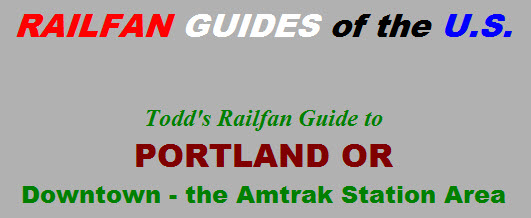
In General
Map
Sights
PORTLAND RAILFAN GUIDE HOME
RAILFAN GUIDES HOME
RAILROAD SIGNALS HOME
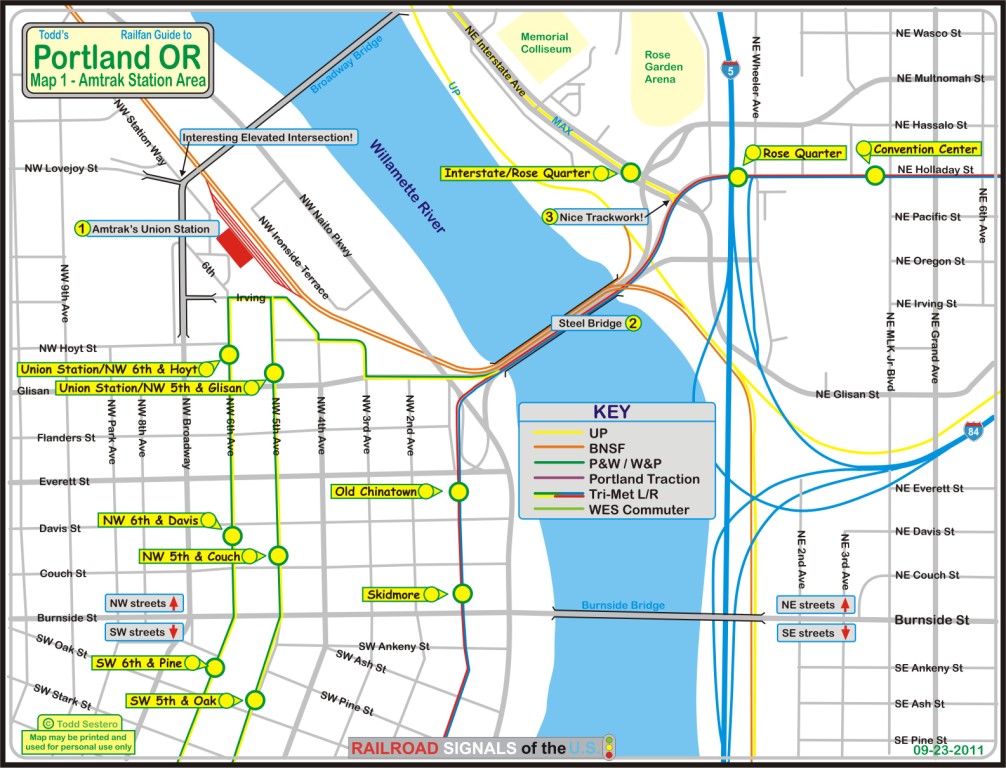
This wye is a double track junction between all of the
lines and allows the yellow line to head north. Although it is technically
a wye, it is not used as such as in conventional railroading, it just allows
trains to go from any branch to any other. BTW, under my banner in the
upper left hand corner are some signals, easy to get to from the station. The east end of the Steel Bridge offers the railfan a
number of interesting things to spend your time chasing down: the cool
short curved bridge, the MAX wye, the peace sign, the wye coming off the Steel
bridge, and signals. Disclaimers: I love trains, and I love signals. I am not an
expert. I do these pages because I love spending my time doing them -
although I do a reasonable amount of research to make sure the information
presented is accurate! :-) :-) Please Note: Since the main focus of my two websites is railroad signals, the railfan guides
are oriented towards the signal fan being able to locate them. For those
of you into the modeling aspect of our hobby, my
indexa page has a list of
almost everything railroad oriented I can think of to provide you with at least a few pictures to
help you detail your pike. If this is a railfan page, every effort has
been made to make sure that the information contained on this map and in this
railfan guide is correct. Once in a while, an error may creep in,
oooooooops, oh well! :-)
My philosophy: Pictures and maps are worth a
thousand words, especially for railfanning. Text descriptions only
get you so far, especially if you get lost or disoriented. Take
along good maps.... a GPS is OK to get somewhere, but maps are still
better if you get lost! I belong to AAA, which allows you to get
local maps for free when you visit the local branches. ADC puts
out a nice series of county maps for the Washington DC area, but their
state maps do not have the railroads on them. If you can find em,
I like the National Geographic map book of the U.S..... good, clear, and
concise graphics, and they do a really good job of showing you where
tourist type attractions are, although they too lack the railroads.
Other notes about specific areas will show up on that page if known. Beware: If used as a source, ANYTHING from Wikipedia must be treated as
being possibly being inaccurate, wrong, or not true.
RAILFAN GUIDES HOME New 10/21/2011![]() Amtrak's Union Station
Amtrak's Union Station
GPS Coordinates: 45.529139, -122.676861
From Wikipedia:
The initial design for the station was created in 1882 by McKim, Mead, and White. Had the original plan been built, the station would have been the largest train station in the world. A smaller plan was
introduced by architects Van Brunt & Howe, and accepted in 1885. Construction of the station began in 1890. It was built by Northern Pacific Terminal Company at a cost of $300,000, and opened on
February 14, 1896. The signature piece of the structure is the 150 ft. tall Romanesque Revival clock tower. The neon signs were added to it in 1948. The signs read "Go by Train"
on the northeast and southwest sides and "Union Station" on the northwest and southeast sides.
The station was placed on the National Register of Historic Places in 1975.
The neon signs on the tower went dark in March 1971, because the railroads using it, Union Pacific, Burlington Northern and Southern Pacific, were preparing to transfer all of their remaining passenger
services to Amtrak. For that reason, the station's then-owner, the Portland Terminal Railroad (itself jointly owned by those three railroads), decided to discontinue operation of the signs.
In 1985, two local non-profit groups, the National Railway Historical Society (Pacific Northwest chapter) and the Oregon Association of Railway Passengers, led a fundraising campaign for public
donations to enable the signs to be restored to operation. New neon tubes, in place of the old, were installed in July, and the signs were switched back on and returned to regular use in September 1985.
The "Union Station" signs remain illuminated continuously, while the "Go by Train" signs flash on and off, in a sequence of "Go", then "Go by", then all three words,
then off and on and repeat.
In 1987, ownership of the station and surrounding land was transferred from Portland Terminal Railroad to the Portland Development Commission as part of the Downtown/Waterfront urban renewal district.
Shortly afterwards, Union Station underwent a renovation. It was rededicated in 1996.
In 2004, the roadway in front of the station was reconfigured, providing a new connection to the northwest and a forecourt. In addition, the area is being redeveloped, including new housing where railroad
tracks once were.
Above: A photo by Rick Holm from July 2nd, 2011... one of many railfan trips run out of Union Station... thanks Rick!
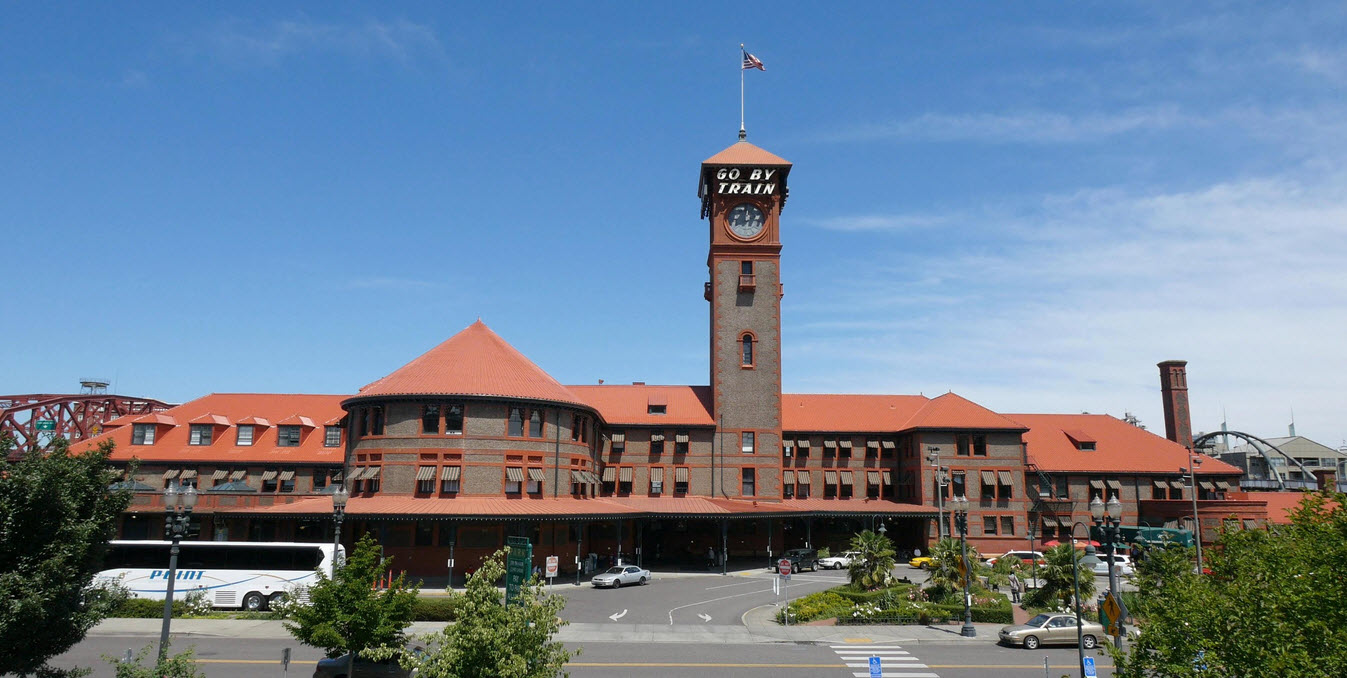
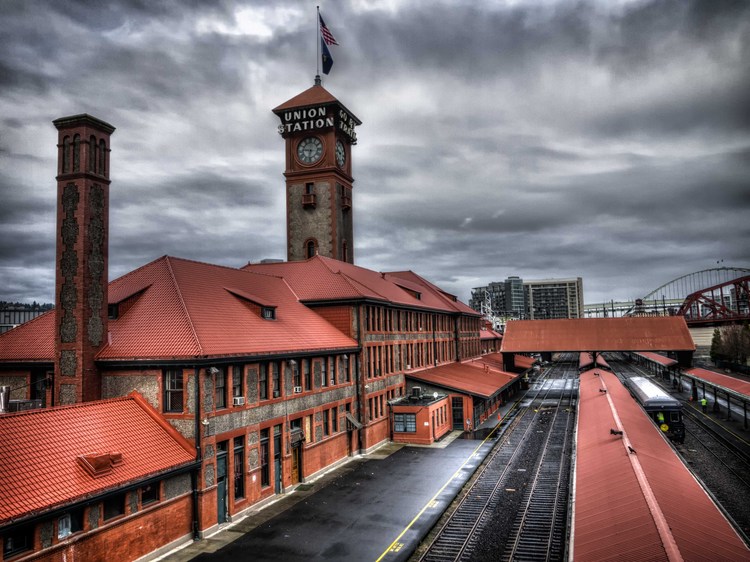
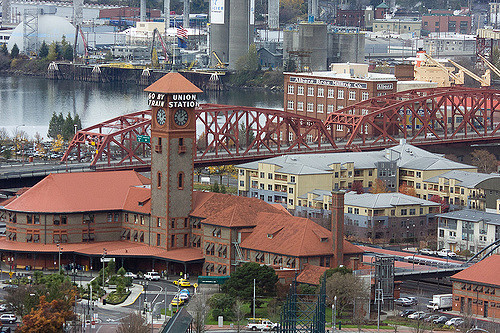
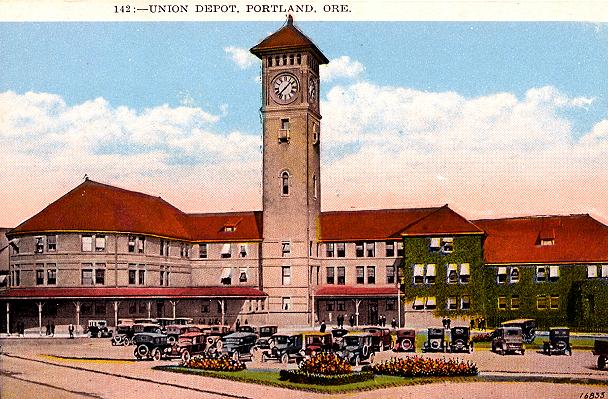 ???
???
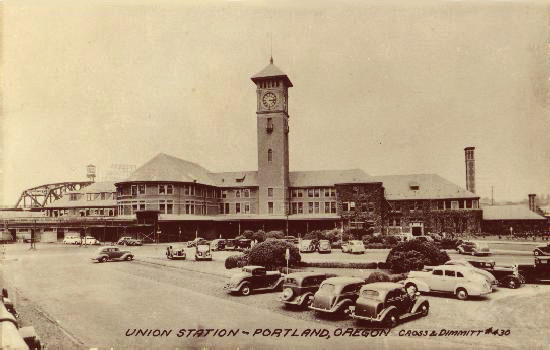 1950
1950
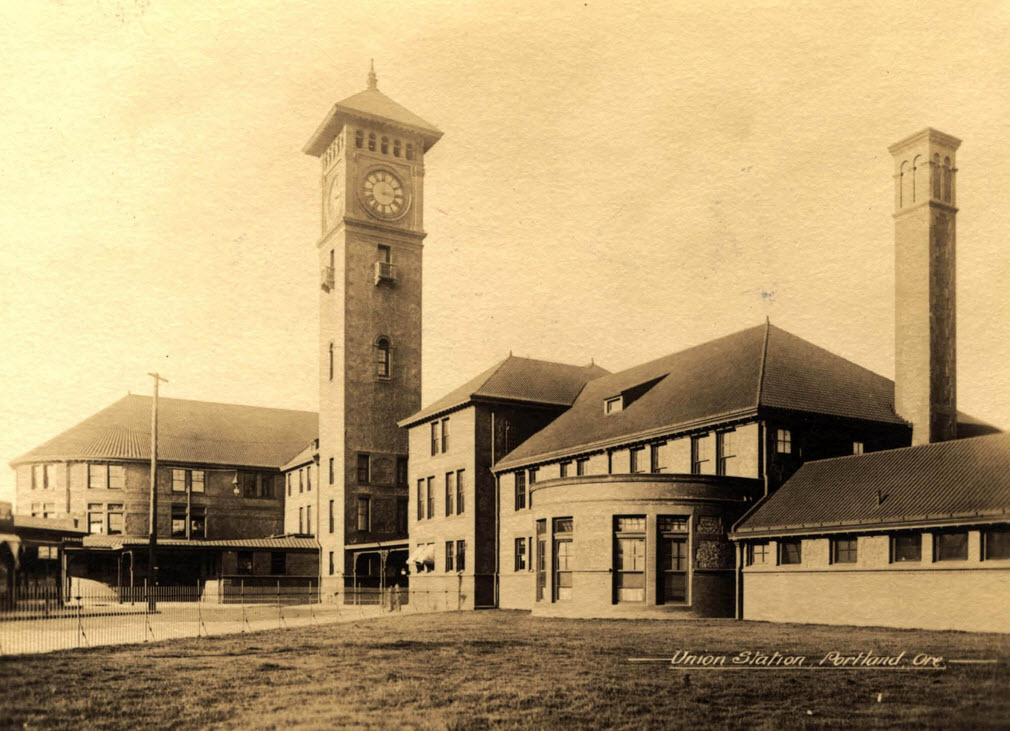 1918
1918
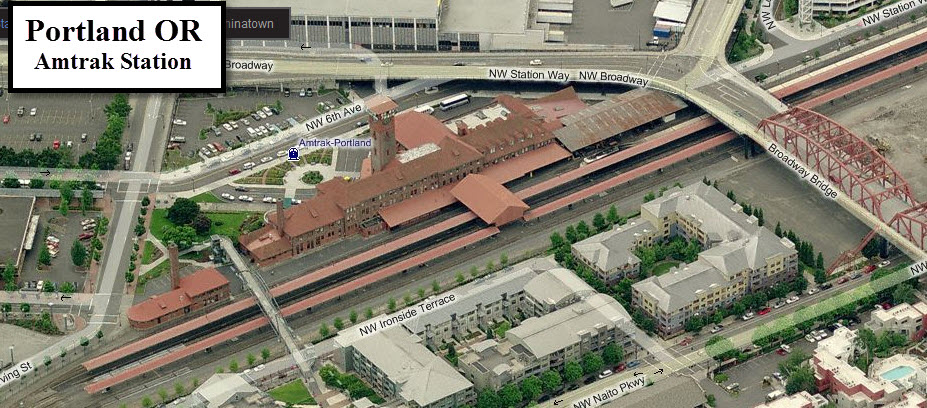
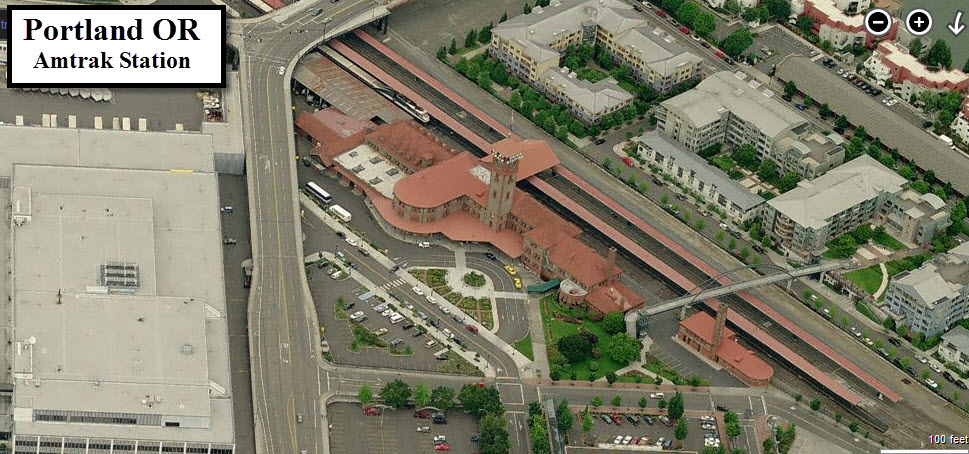
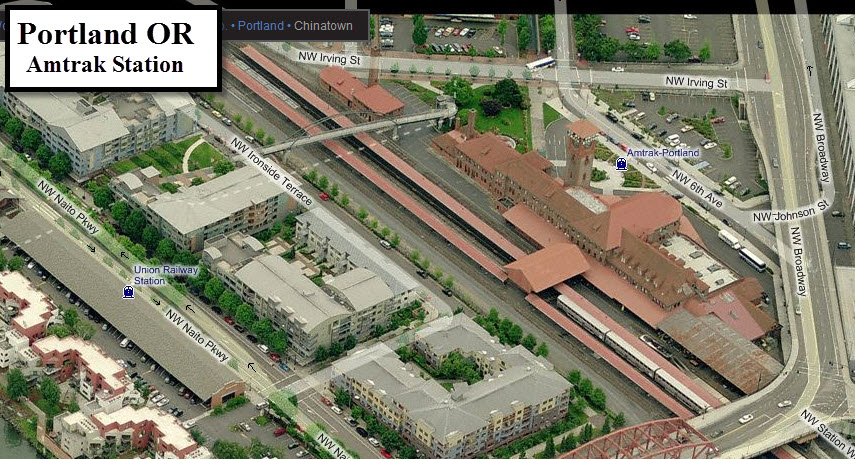
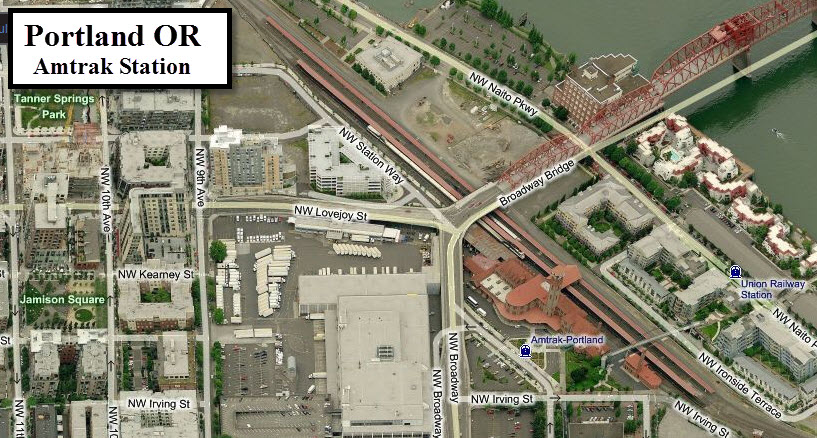
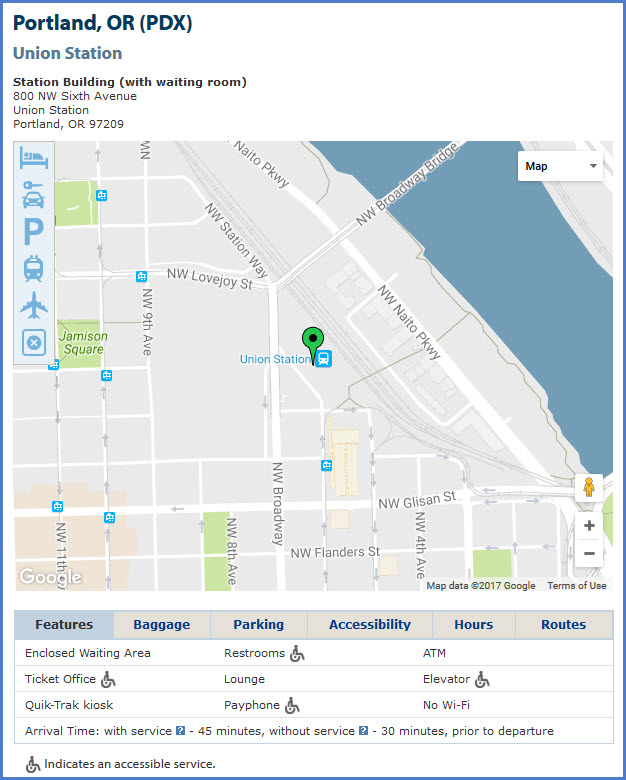
![]() the Steel Bridge
the Steel Bridge
GPS Coordinates: 45.527587, -122.669114
I don't normally make a big deal out of bridges, but this lift bridge deserves a special mention because of it's design and what it carries on it. Three modes utilize the bridge: vehicular traffic,
the MAX Light Rail system, and trains. Trains use the lower deck, and the bridge is double tracked. One of the best shots I have in Portland is of 4449 coming across the bridge from the eastern
side - I gotta see if I can find it...... I'm sure there are more examples of double deck lift bridges, but the only other one I know of is inNewark
NJ.
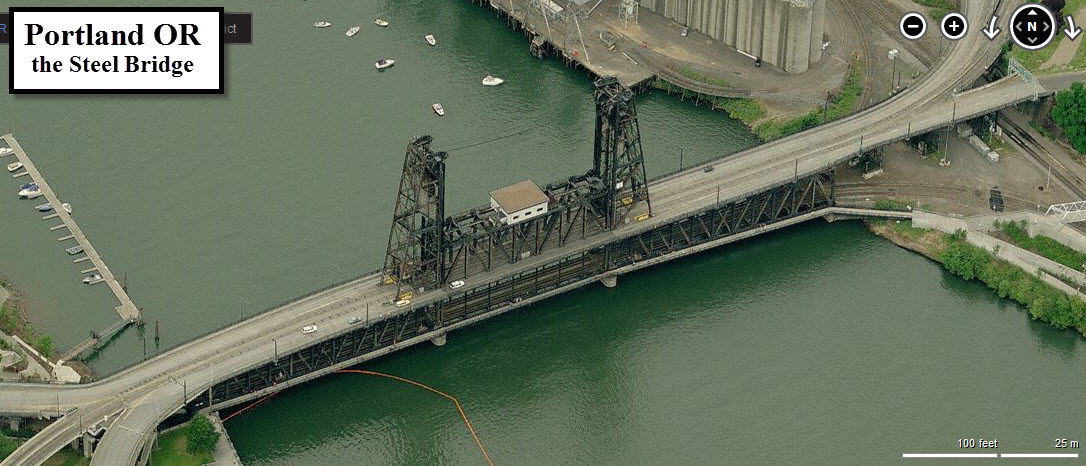
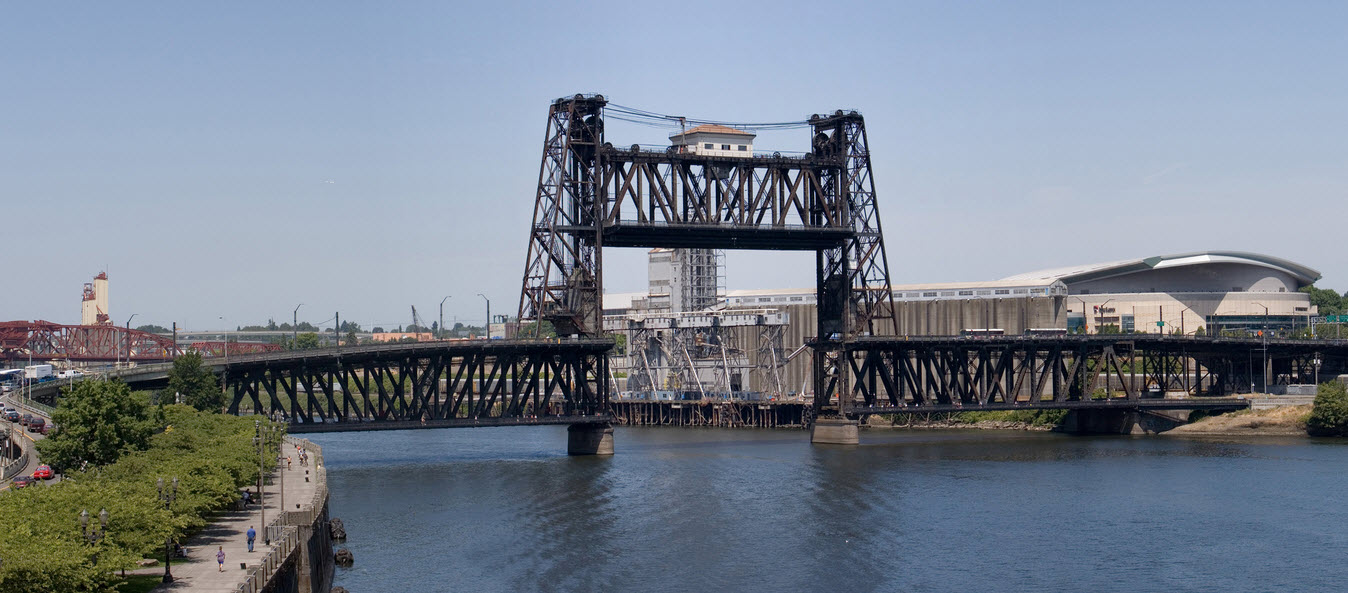
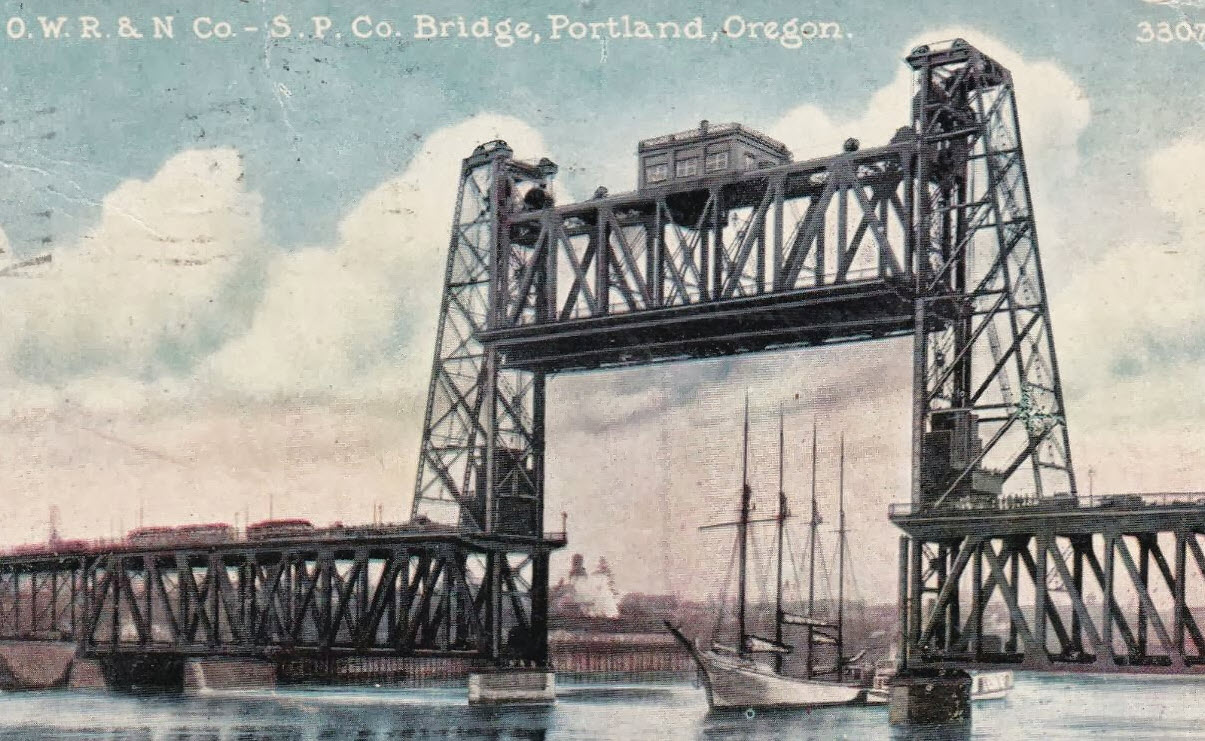
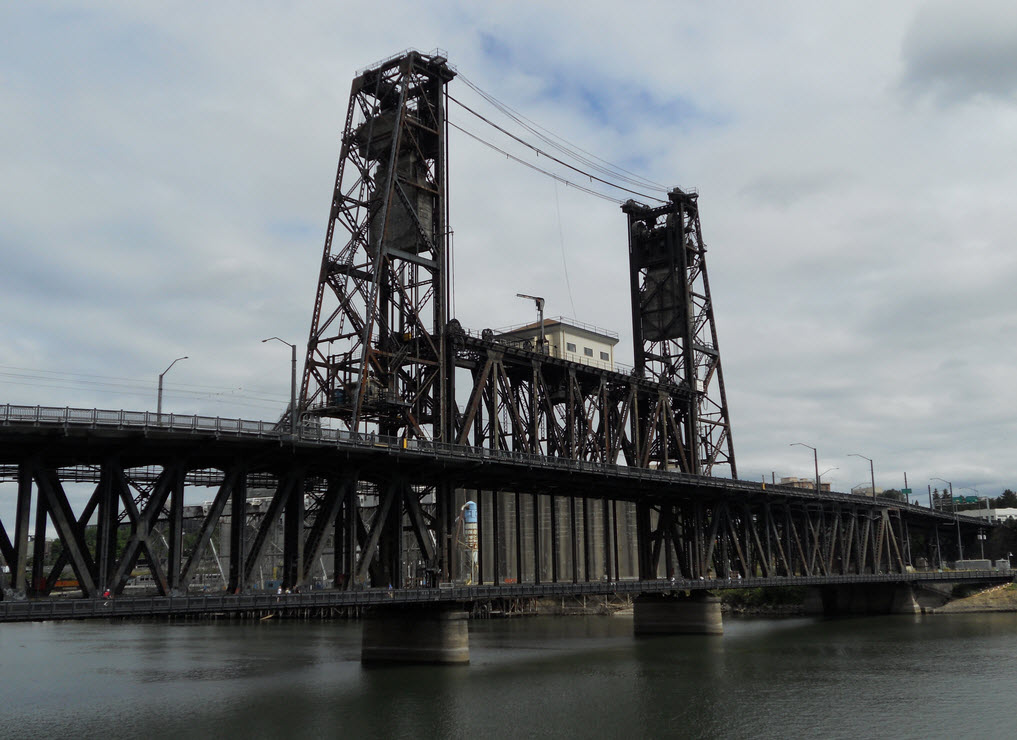
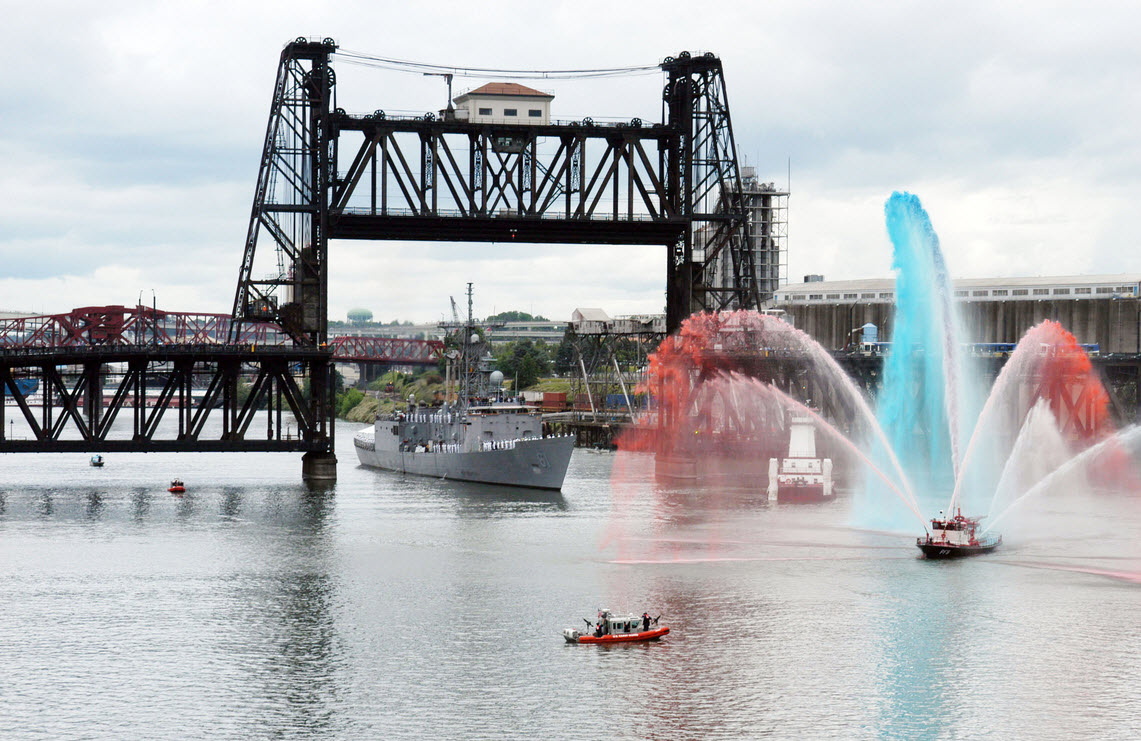
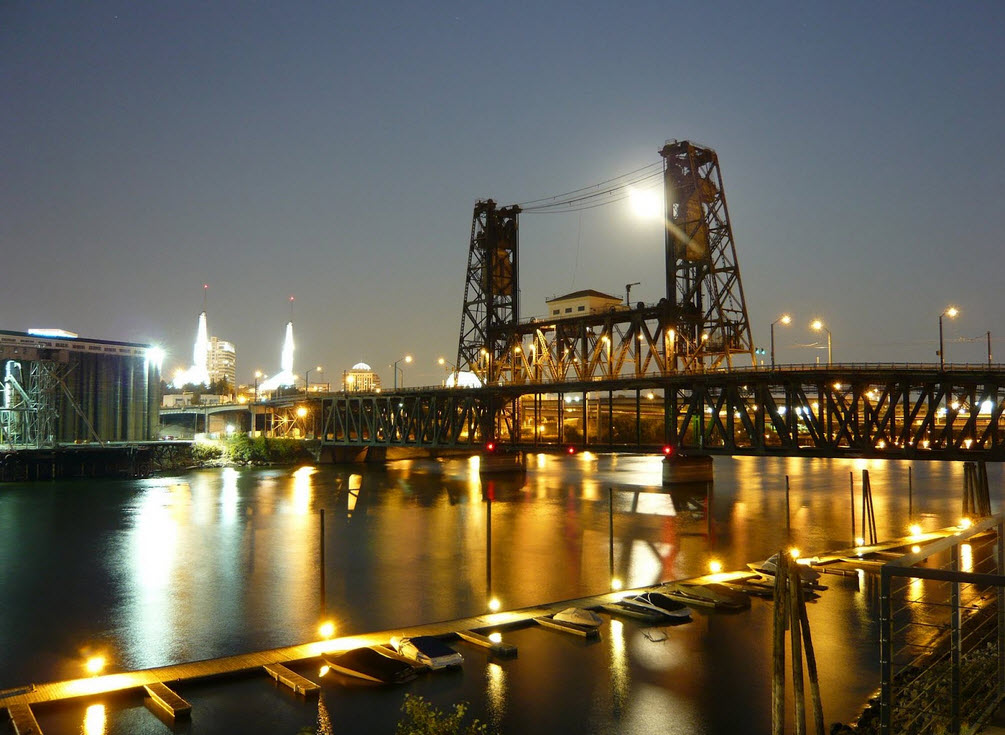
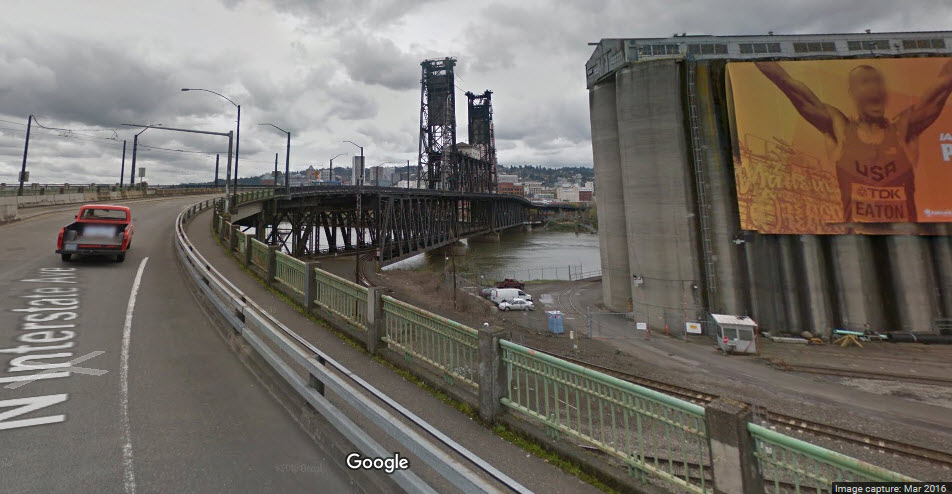
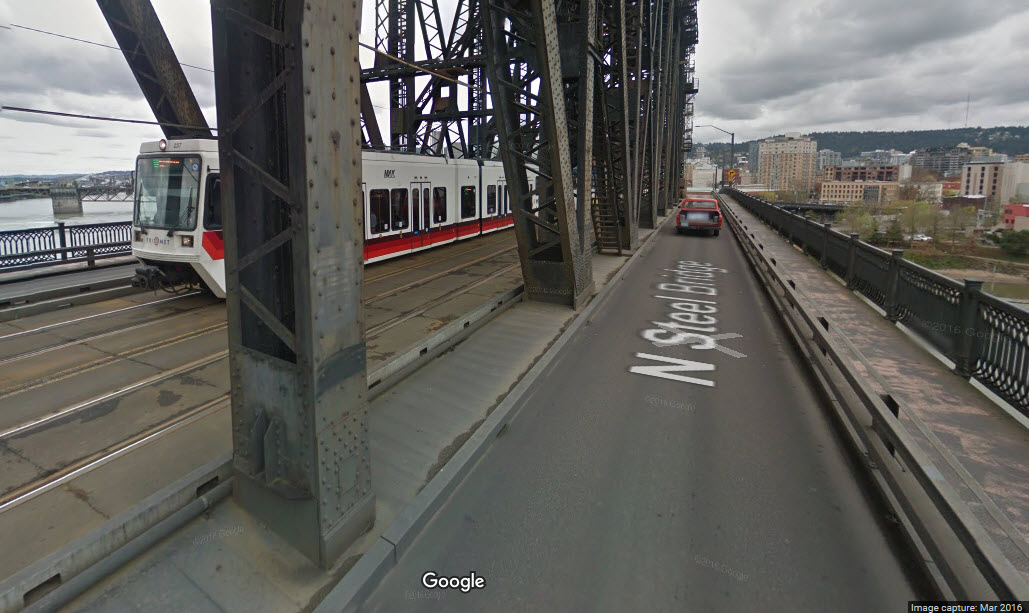
![]() Light Rail Wye/Junction
Light Rail Wye/Junction
GPS Coordinates: 45.529691, -122.666781 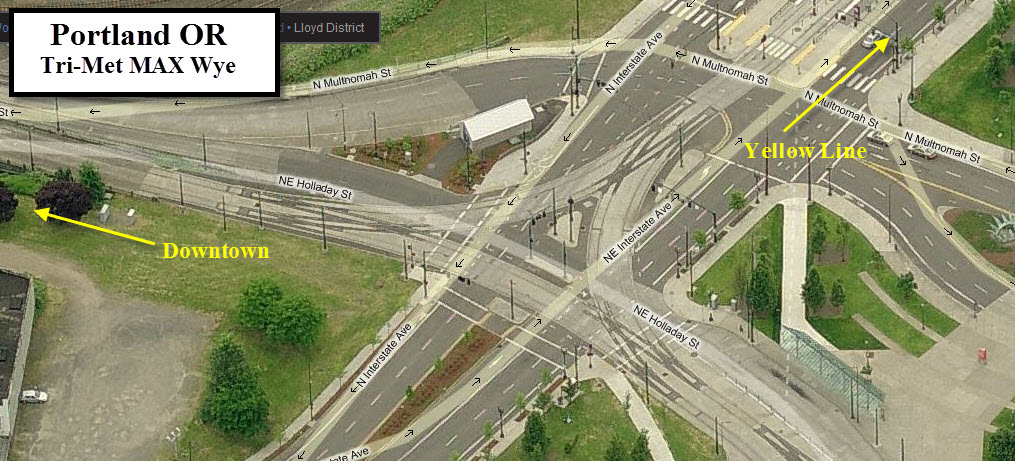
![]() East end of the Steel Bridge
East end of the Steel Bridge
GPS Coordinates: 45.528158, -122.667795 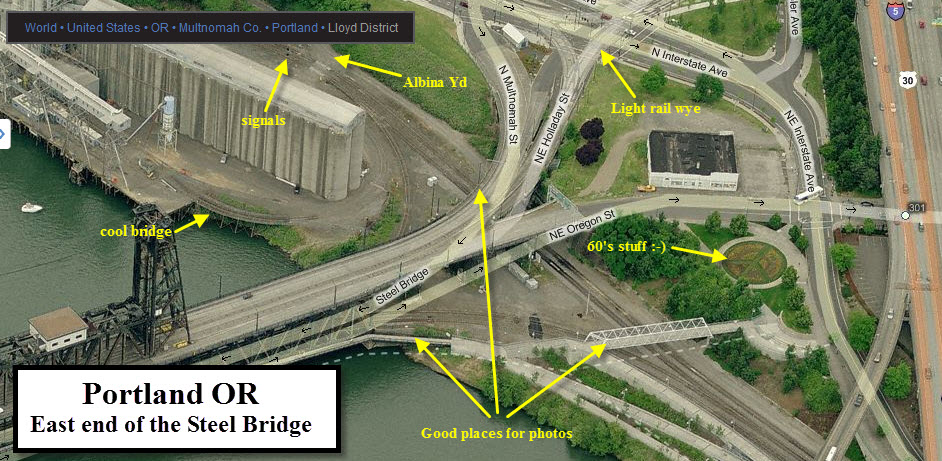
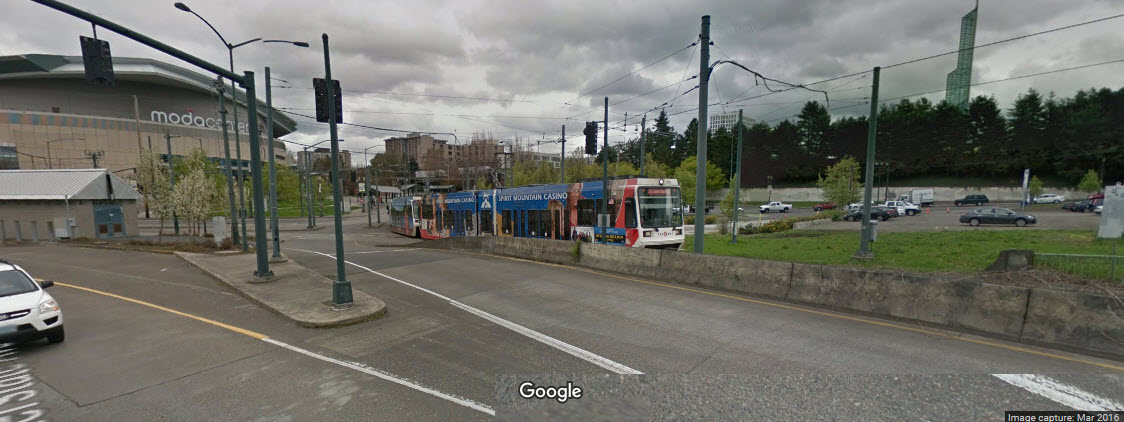
![]() Cool Bridge
Cool Bridge
GPS Coordinates: the coordinates from the site above will suffice since they are that close
A close-up of the little curved bridge, perfect for finding a place for it on your model pike!
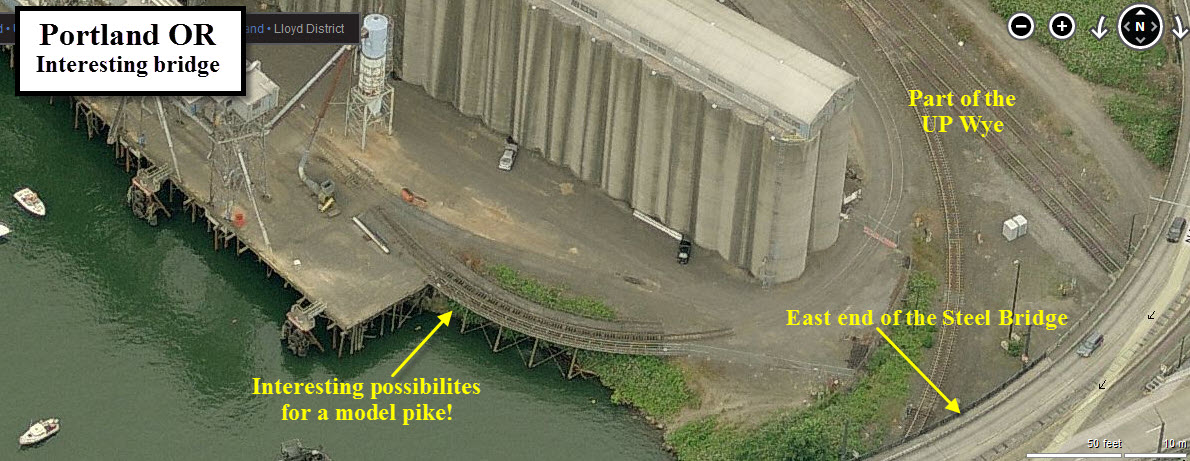
BTW, floobydust is
a term I picked up 30-40 years ago from a National Semiconductor data
book, and means miscellaneous and/or other stuff.
Pictures and additional information is always needed if anyone feels
inclined to take 'em, send 'em, and share 'em, or if you have
something to add or correct.... credit is always given! BE NICE!!! Contact info
is here
RAILROAD SIGNALS HOME
last Modified:
21 Feb 2017